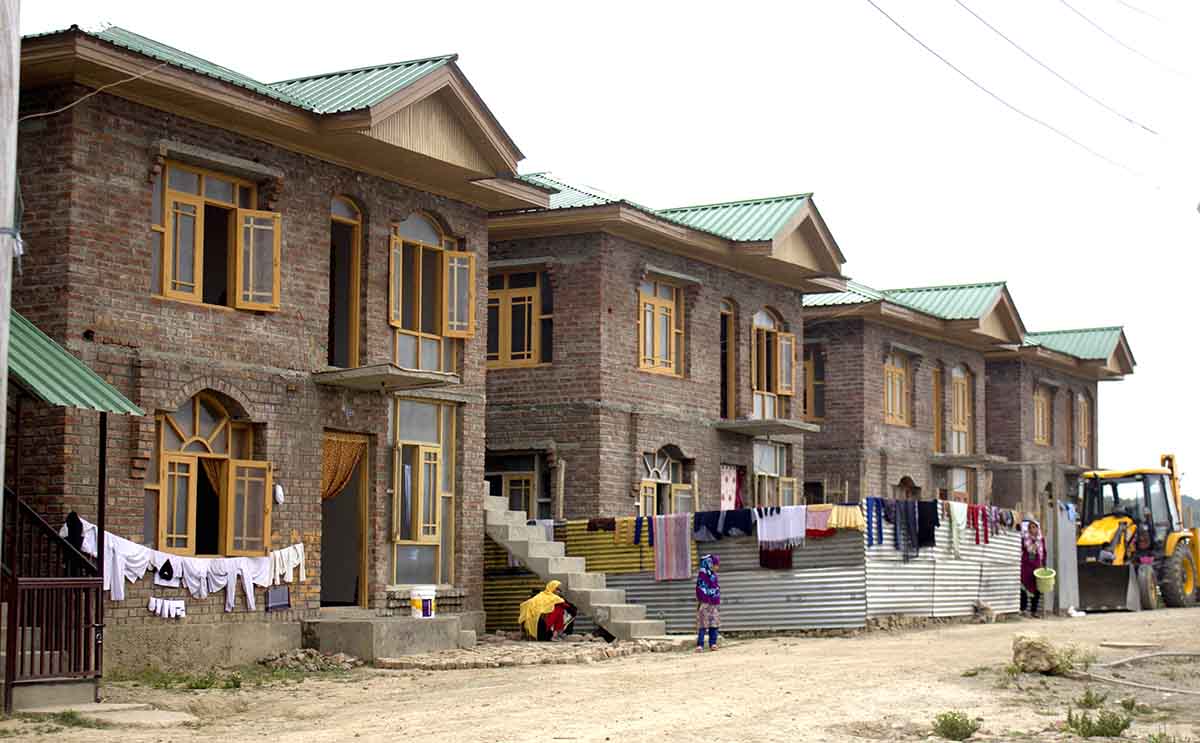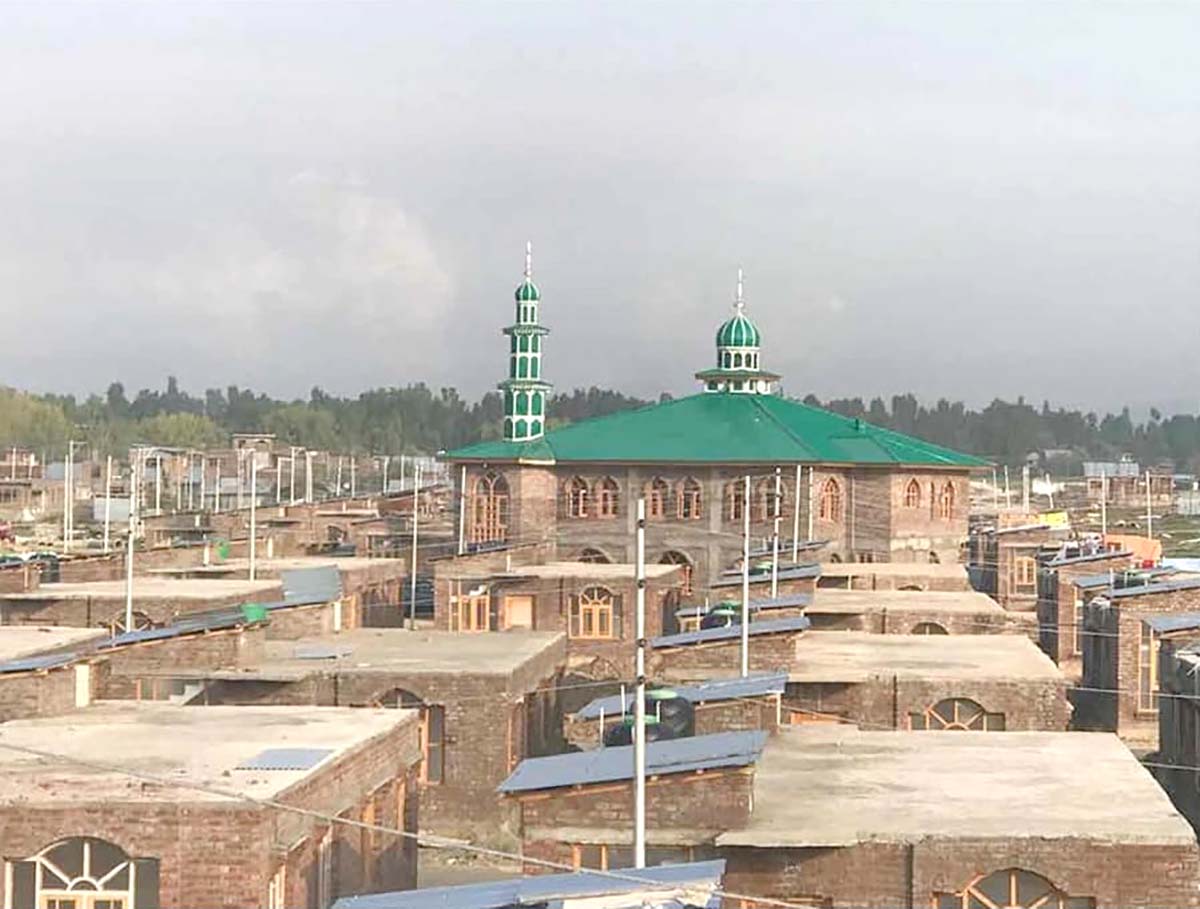A nongovernmental organization that has worked on rehabilitation front in 2005 earthquake raised nearly seven crore rupees to create small homes for the decent living of some of the poorest families in Srinagar, reports Durdana Bhat

In September 2014 when water filled Shaista’s makeshift shed in Bahrar (Nigeen), the 4-member family put up a huge struggle to survive. They lost their shelter though. They survived with only a few household things. Post- floods, she had no place to live.
In 2016, her family submitted an application to the Kashmir Welfare Trust (KWT), a non-government organization for help. A year later, the family was rehabilitated at Rakh-e-Arth near Bemina in city outskirts. They got a pre-constructed house: two rooms, a kitchen, lobby and a washroom. Despite all the hurdles she went through, she now works in a boutique and her brother works as a labourer to sustain their daily expenses.
It was after the floods devastated major parts of Srinagar; KWT initiated a proposal to the state government for rehabilitation of victims of Chunt-Khul, Chinar Bagh and a few other areas of Srinagar city at some safer places. It was after a series of discussions that government agreed to contribute land at Rakhi-e-Arth for a housing project Gulshan-e-Nomaan Colony in 2017. Rakhi-e-Arth is a vast housing settlement being developed by the government to accommodate the re-located Dal dwellers. The government agreed to offer land for the KWT initiative.
Manzoor Ahmad Wangnoo who leads KWT initiated the idea after assessing the socio-economic status of the flood-devastated residents in Chinar Bagh and Chuntkul. They all belong to underprivileged classes, barely making two-ends meet. KWT had already evolved with some expertise in wake of 2005 earthquake when it undertook rehabilitation work in Uri and Tangdar, the two belts flattened by the tragedy. The Trust wanted to take their expertise to the next level.
They did deliver. So far, the Trust has constructed around 112 houses for downtrodden Dal dwellers and other underprivileged families.
“This was a sort of a Public Private Partnership (PPP),” one sympathizer of the Trust said. “The government gave land and certain services; the Trust raised donations and invested in the infrastructure.”
“Urban Development Department Nawang Rigzin Jora approved the proposal and allotted 40 canals of land,” Mohammad Ebrahim, one Trust office-bearer said. “This land was given for rehabilitating 100 households; we ended up making 112 units.”
The project took off on November 21, 2014, and it was to be completed in two years. But the inclement weather, 2016 unrest, shortage of cement were the major hurdles that Trust volunteers managed with a slight delay. The families came for house-warming in late 2017.
Afroza Akhtar, the mother of three children including two daughters, was living in miserable condition in a rented accommodation at Hamdani Colony, Bemina. One day, her landlord asked her to vacate. The problem was their economic status. They were barely making twp-ends meet. Her husband was an auto driver and not able to earn much. Somehow Trust traced her and since 2016 she is living a dignified life.
“We had no place to live in,” Afroza said. “Initially, we were living in pitch dark without water. Now they have installed these facilities and it is getting better day by day here.”

So far, Trust has given keys to 99 families. These include 57 families who were rendered houseless after their shanties were demolished by LAWDA at Pandithpora, Rainwari and some families were recommended by the administration. The new residents have come from a range of localities: Pandithpora, Rainwari, Fateh Kadal, West Nigeen Kalla Mohalla, Barbar Shah, Noor Bagh. Chinar Bagh, Bemine, Chattabal, Behrar (Nigeen), Amira Kadal, Dalgate, and Tankipora.
The procedures were simple. A houseless had to move an application to the Trust. The Trust members would survey and crosscheck the claims. Once established, the applicant was given an allotment.
Manzoor Ahmad Mir, 57, from Chinar Bagh, is another proud resident of the Colony. “I shifted here only last week,” Mir said. “I have been allotted a house with a kitchen, lobby, washroom and two rooms.”
Mir said the residents will take their time in making the new locality their home. They have problems to confront. They have to trek 2 km to get the bus on the main road. The hospital is 6 km away. “They had built a mosque but they should also build a school and a dispensary,” Mir said. “It becomes difficult for someone who doesn’t have a basic transport facility to reach the hospital.”
What is interesting is that most of Trust’s donations come from charities across India. The Trust spent Rs 5.41 lakh on every single unit. “The expenses right from the excavation to the constructing of the house was done by the Trust,” a Trust worker said. “The land was provided by State Government along with the drainage, water supply and other basic amenities were extended by the LAWDA.”
The Trust also constructed a 2-storey Masjid-e- Rahmatan Lil Aalameen with praying capacity of 800 persons. The Floriculture, Gardens and Parks department has developed a multipurpose park for the residents and a children’s park. The housing settlement would require some more work and investment to improve the quality of living. The inner roads need to be fixed. Trust officials said it will have a school and a dispensary. The family have actually sought help in the demarcation of a place as a graveyard and a marriage hall. Incumbent Finance Minister Syed Altaf Bukhari had promised the residents that their quality of life will be improved. He was there in 2016 to hand over the keys to the first batch of residents.














